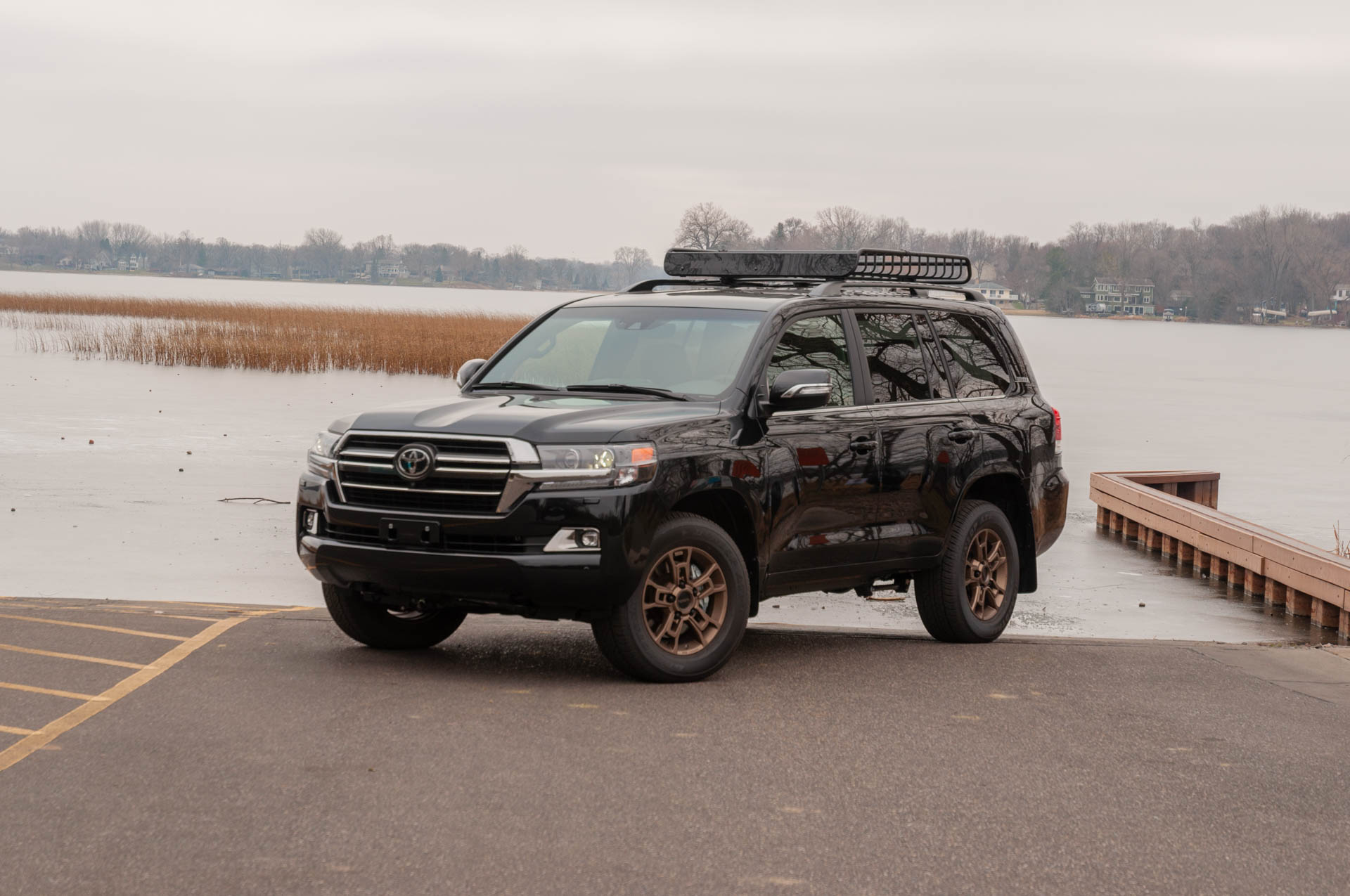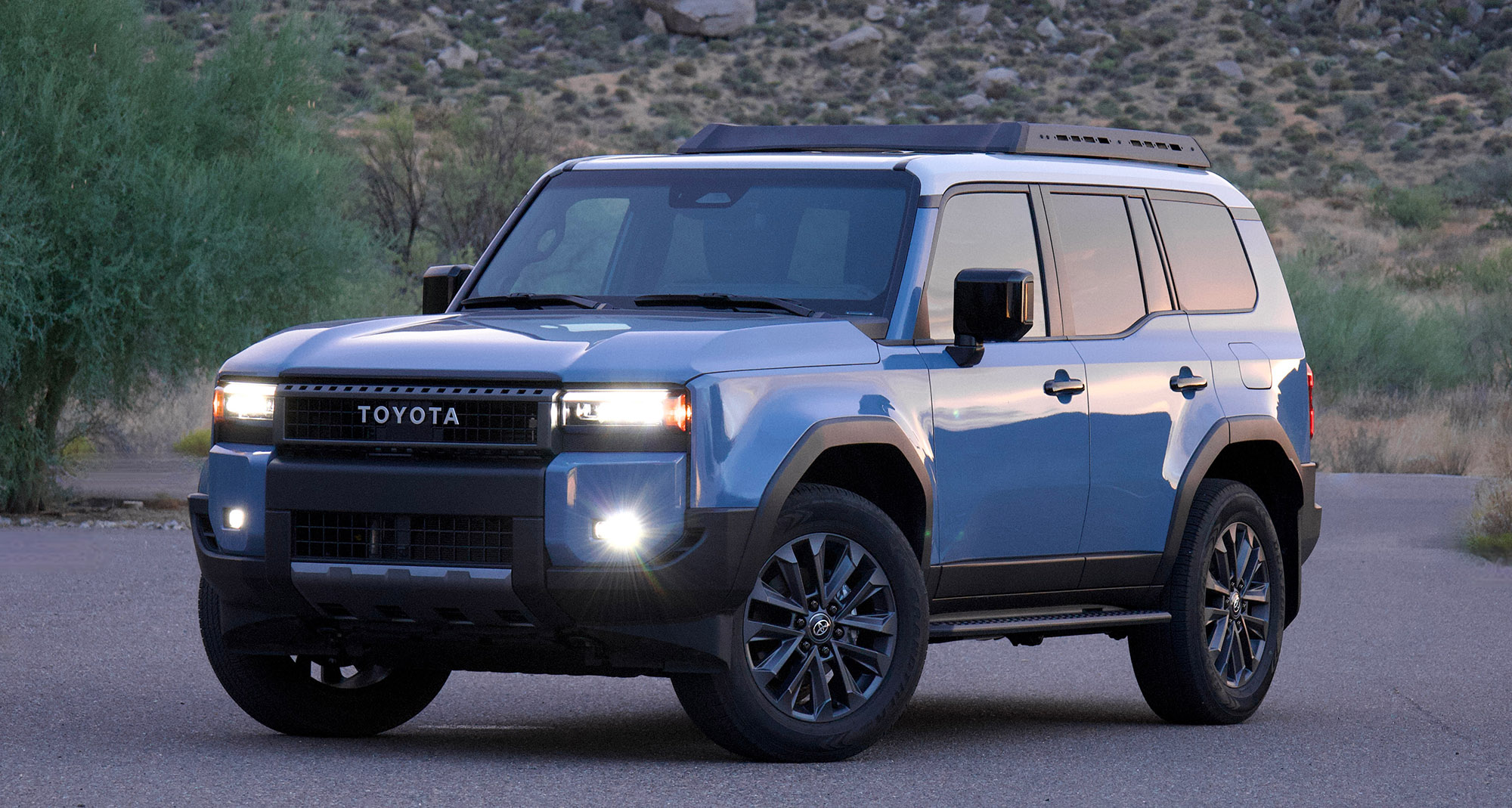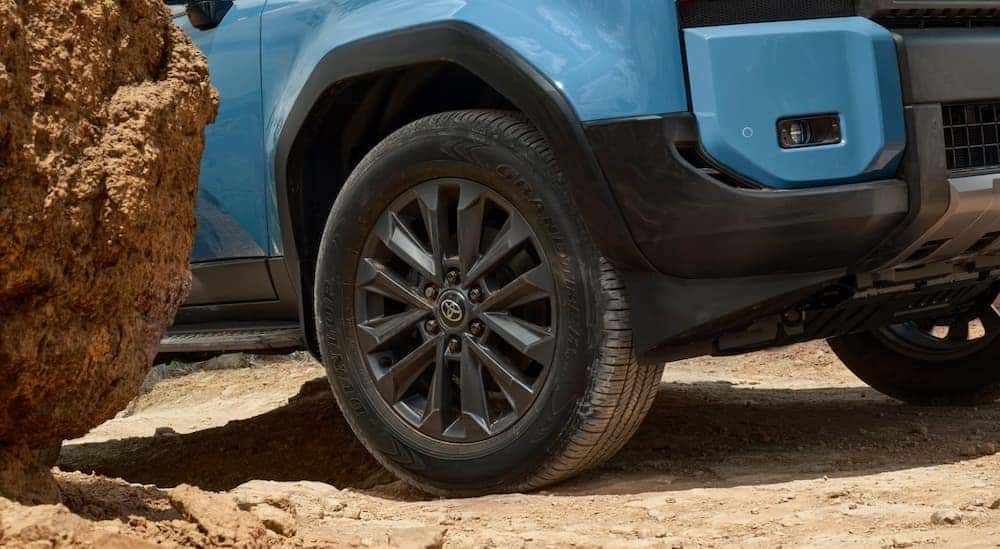Old-versus-New: The Big Picture
Recap of the players
-
Old-generation Toyota Land Cruiser (2008‑2021) (US last sold in 2021): Traditional body-on-frame SUV, 5.7 L V8, full-time 4WD, revered for durability and off-road capability. Specs: 381 hp / 401 lb-ft torque. (www.cardealerships.com)
-
New-generation 2024 Toyota Land Cruiser (“LC250” generation): Radical re-thinking: smaller turbo-4 plus hybrid, updated architecture, off-road hardware, lighter weight. Specs: 2.4 L turbo four-cyl + electric motors = 326 hp / 465 lb-ft torque. (Car and Driver)
The key question: Did Toyota get it right? Did the new Land Cruiser uphold (or exceed) the old one’s strengths—while addressing its weaknesses—and are the compromises worthwhile?
What the old Land Cruiser did well
Ruggedness & legacy






-
The 2021 Land Cruiser had a proven body-on-frame ladder chassis, full-time 4WD with center diff lock, 5-7 seats, and a large V8 engine that delivered instant, linear power and torque. (Toyota)
-
In reviews it earned praise for being “exceptional off-road” and “rock-crawling capable” thanks to its heavy duty hardware. (Edmunds)
-
Its very presence conveyed “go anywhere” ruggedness and Toyota’s durability reputation.
Off-road capability & driver confidence
-
With 381 hp and 401 lb-ft, the old LC had muscle—though the powerband priority was more around torque for heavy loads and off-road moves.
-
There was a sense of mechanical simplicity (especially relative to modern electronics) which matters in remote off-road situations: easier to fix, fewer complexities.
-
The chassis was big and heavy, but that mass also gave it stability off-road and in rough terrain.
Familiarity & emotional appeal
-
Long-standing global use of the Land Cruiser name gave it huge brand equity. Buyers knew what they were getting.
-
Even on-road, reviewers appreciated its “commanding view” and road-presence. (Edmunds)
What the old Land Cruiser didn’t do well
Fuel economy & everyday usability
-
Fuel economy was terrible by modern standards: 13 mpg city / 17 mpg highway for the 2021 model. (J.D. Power)
-
On-road manners: heavy body, older steering and suspension tech meant it felt more truck than refined SUV. Autoblog: “barge-like feeling” with V8. (Autoblog)
Tech & interior aging
-
Although well equipped for its day, the old LC was overdue in terms of infotainment, connectivity, and interior modernity. Reviewers pointed out interior plastics and tech felt dated. (Edmunds)
-
The third-row seating was cramped (in many markets) and cargo flexibility was less than ideal when the vehicle was heavily loaded.
Size & weight trade-offs
-
Its large size made it less manoeuvrable in tight trails and urban environments.
-
Heavy weight slightly hampered agility and economy.
What the new Land Cruiser attempts to achieve
Modernisation & powertrain shift





-
The new model uses a smaller 2.4 L turbo-four combined with electric motors, for 326 hp / 465 lb-ft torque. Despite lower hp than the old V8, the torque figure is higher. (Car and Driver)
-
It rides on a more modern platform: lighter weight and higher rigidity, updated suspension, advanced off-road systems (multi-terrain select, crawl control, stable front geometry). (Toyota Engage)
-
Exterior styling returns to a more squared shape with off-road heritage cues—A-pillars pushed back, flatter dash, better visibility. (Toyota Engage)
-
Tech: improved driver assistance, modern infotainment. Fuel economy improved significantly compared to the old LC: EPA 22/25 mpg city/highway for new model. (MotorTrend)
Aiming for the “best of both worlds”
Toyota is trying to blend serious off-road capability (heritage DNA) with everyday usability and better economy. It’s a recalibration: ruggedness meets modern slice of life.
Where the new Land Cruiser succeeds
Off-road capable without the size penalty
-
Reviewers such as Carwow found that in side-slope and articulation tests the new LC outperformed the old one thanks to more sophisticated electronics and suspension travel. (carwow.co.uk)
-
On-road manners are improved: the new model is described as “smooth and composed” compared to the old heavy V8 version. (Autoblog)
-
The lower weight and hybrid powertrain means torque is abundant and usable early in the rev range, which helps off-road performance.
Better fuel economy & modern tech
-
The jump from ~13-17 mpg up to low-20s is meaningful. While not stellar for a hybrid, it’s a huge improvement. (Car and Driver)
-
Interior and tech are modern: connectivity, lane assist, adaptive cruise etc are all standard now. Reviewers note that onboard experience is far more refined. (MotorTrend)
Heritage design touches & rugged styling
-
Many applaud the styling: the new LC gives nods to past tough Land Cruisers, squared-off shape, visible roofline, upright stance.
-
For those wanting “go anywhere” looks with modern packaging, the new LC delivers.
Where the new Land Cruiser falls short (or raises questions)
Power & towing compromise
-
Despite higher torque, many reviewers consider the 0-60 time slower (~7.7-8 s) compared to quicker rivals and even older models in some respects. (Car and Driver)
-
Towing capacity dropped from ~8,100 lb (old LC) to ~6,000 lb for the new. (Autoblog)
— For users intending heavy towing (boats, caravans) this may be a trade-off.
Feel, sound, and “character”
-
Some enthusiasts feel the new turbo-hybrid lacks the visceral sound, muscle and simple mechanical feel of the V8/heavy frame old model.
“Just rented a new base LC... The interior felt cheap… The engine is underpowered (felt slightly more powerful than the Rav4 hybrid…)” (Reddit)
-
Wind noise and some road noise still noted due to boxy shape. (MotorTrend)
Complexity & long-term questions
-
Hybrid + turbo + advanced electronics = more complexity than old naturally aspirated simple systems. Questions over long-term reliability, especially in harsh remote conditions, are voiced:
“My MPG never exceeded 16.8… The sticker 22-26 but this is not reality for me.” (Reddit)
-
Reduced simplicity may affect durability, repairability in remote areas (where older LCs thrived) and total cost of ownership.
Loss of third-row and change in size guidelines
-
The new model no longer offers a third-row seat (in the US market) in many trims, reducing its family-SUV utility for large families. (MotorTrend)
-
While smaller/lighter is good in many respects, some buyers who valued the large-frame “tank” feel may view it as a downgrade in robustness.
So: Did Toyota get it right?
My verdict
Yes — with caveats. Toyota largely succeeded in modernising the Land Cruiser by preserving its core identity (off-road capability, rugged aura, Toyota reliability) while improving usability, fuel economy and tech. For many buyers, this is a net win.
However, the compromises are real: if you’re a heavy-duty user (max towing, large families, ultra remote serviceability) and you loved the old brute-force V8 and tank-like presence, you might feel the new model is a “step sideways” rather than straight up.
Quick pros & cons summary
Pros of the new LC
-
Strong torque + modern hybrid powertrain
-
Improved fuel economy and tech
-
Better ride & manoeuvrability, especially on-road and in tighter terrain
-
Updated heritage-inspired styling without being a pure retro repeat
Cons of the new LC
-
Lower towing capacity and less outright horsepower feel
-
Some loss of “character” from old V8/truck feel
-
Higher complexity = potential cost/repair trade-offs
-
Limited third-row or smaller footprint for some buyers
Final thought
If you’re buying a Land Cruiser today for the future — modern roads, decent fuel economy, family use + occasional off-road adventures — then Toyota got it right.
If you’re buying it for the extreme legacy use — decades of heavy towing, ultra remote field repairability, and “old school truck” feel — then it’s a very good product, but maybe not exactly what the old Land Cruiser represented.

